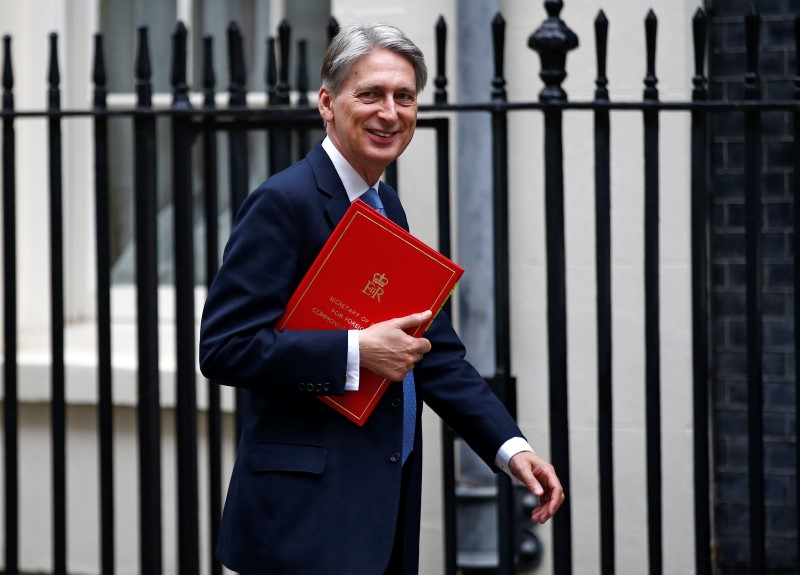Street Calls of the Week
(Bloomberg) -- The U.K. has shifted its approach to the transition agreement it wants to put in place for after Brexit, falling into line with the European Union’s long-held stance.
Businesses have been demanding an urgent deal with the EU that would allow trade to continue as usual for two years after Brexit day in March 2019. Chancellor of the Exchequer Philip Hammond had championed their calls, saying the longer it took to secure such an accord, the less it was worth. He backed away from those comments on Tuesday, a day after Prime Minister Theresa May surprised lawmakers by saying that transition would only be part of the final Brexit deal, which isn’t expected for another year.
The comments by the premier and her finance minister are a result of detailed conversations with their European counterparts in recent days, according to a person familiar with the situation. May attended a European summit in Brussels at the end of last week and had a series of phone calls with EU leaders in the run-up.
The EU has long held that a transition accord can only be agreed on as part of the final deal, and German Chancellor Angela Merkel has been skeptical about such an agreement unless the end destination is clear. Despite that, Hammond had been channeling businesses’ demands for a quick deal on the transition -- describing it as a “wasting asset” -- and the Bank of England’s head of supervision said one should be in place by Christmas.
Businesses say they will start executing contingency plans and moving staff early next year if they aren’t sure what their terms of trade will look like after March 2019.
Pushed by Lawmakers
Hammond and May’s spokesman, James Slack, both said on Tuesday they would continue to seek an “implementation” deal as quickly as possible in order to give certainty to business. But pushed by lawmakers during a question-and-answer session in Parliament as to whether he stood by his comments that a deal was worth less the later it was secured, Hammond hesitated and said the government was aware of business needs and was confident it would be able to deliver reassurance.
At the Brussels summit, the other 27 EU leaders agreed to start internal preparations so that they can be ready to move Brexit talks on to trade and transition in December. That will only happen if the U.K. makes a more generous offer on the divorce settlement. May and Hammond both cited the EU decision as a cause for optimism.
The U.K. government now needs to quickly formulate a position on the kind of trade deal it wants after Brexit. More than a year after the referendum, May’s cabinet has not yet reached agreement, according to two government officials. Publicly at least, debates in the divided cabinet have been focused on whether any transition is even a good idea, and latterly on preparations in case there is no deal at all.
Ministers still hope they can deliver a signal in early 2018 on the principles of transition and the future relationship, which would provide sufficient assurances to business, according to the person familiar with the situation, who asked not to be identified because of the confidential nature of the discussions.
The chief EU negotiator, Michel Barnier, told the Guardian newspaper that any U.K. agreement with its biggest trading partner will put it in a much weaker position than at present and will be closer to the deal Canada struck with the EU. May has said she wants a “deep and special” relationship and one that goes further than the Canada-EU arrangement, without spelling out the details.
